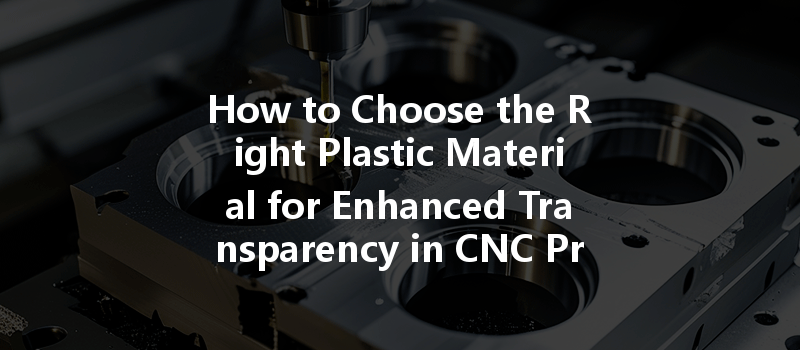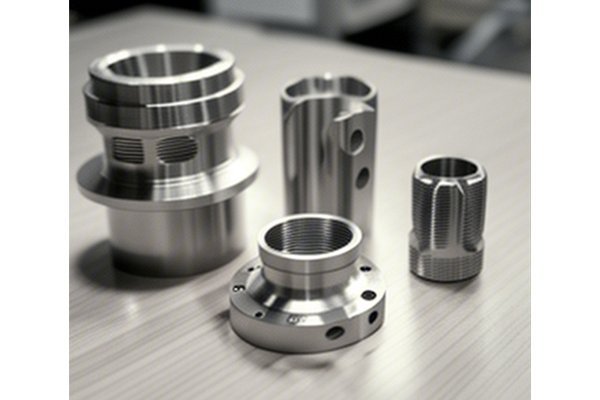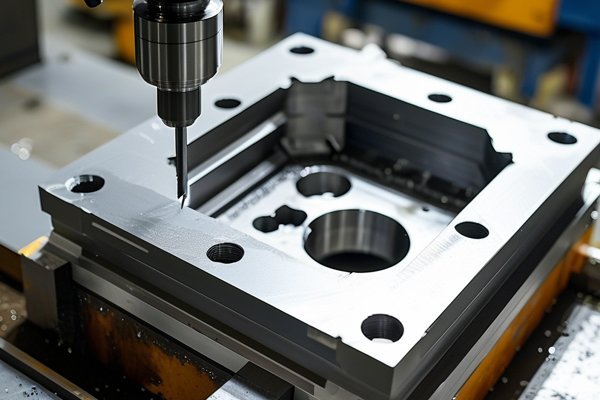Opening
Did you know that over 90% of designers encounter challenges when selecting the right plastic material for their CNC prototypes? One study revealed that mistaken material choice can lead to project delays, increased costs, and unsatisfactory final products. In the world of computer numerical control (CNC) prototyping, choosing the right plastic material, especially when transparency is a priority, can be the difference between success and failure. As industries innovate and evolve, understanding these materials becomes crucial for design engineers, manufacturers, and anyone involved in product development.
Understanding the Importance of Material Selection in CNC Prototyping
CNC prototyping is a pivotal phase in product development. It allows for rapid modeling, testing, and validation before moving into full-scale production. The choice of material directly impacts the functionality, aesthetics, and overall performance of the prototype. For projects where clarity and transparency are essential, such as in the medical, automotive, and consumer goods sectors, the material selection process becomes even more critical.
When selecting a transparent plastic for CNC prototyping, several factors must be taken into consideration:
Popular Transparent Plastics for CNC Prototyping
Several materials are known for their transparency and suitability for CNC prototyping. Below, we delve into the most widely used transparent plastics, including their attributes, applications, and potential limitations.
Attributes: Acrylic, commonly known as PMMA (polymethyl methacrylate), offers excellent optical clarity and weather resistance. It’s lighter than glass, and its ease of machining makes it a favored option for a range of applications.
Applications: Acrylic is commonly used in displays, lighting fixtures, medical devices, and vehicle windows.
Limitations: Although acrylic is durable, it is prone to scratching and can shatter if subjected to high-impact force.
Attributes: Polycarbonate is renowned for its outstanding strength and nearly unbreakable nature. It also boasts great optical clarity, making it ideal for applications where safety is concerned.
Applications: Widely used in eyewear lenses, safety goggles, and impact-resistant components.
Limitations: While polycarbonate is resistant to impact, it can be susceptible to scratching unless coated with a protective layer.
Attributes: Clear PVC can be a cost-effective alternative with decent clarity and good chemical resistance.

Applications: Used in signs, packaging, and translucent barriers.
Limitations: PVC tends to have lower transparency compared to acrylic and polycarbonate, and it may not perform well under extreme temperatures.
Attributes: These are thermoplastics from which glass fibers are incorporated to enhance strength and thermal stability, while also maintaining a degree of translucence.
Applications: Typically found in structural components where some transparency is desired, such as in certain automotive applications.
Limitations: Glass-filled plastics can be more challenging to process and may require specialized CNC machining techniques.
Key Considerations in Material Selection
When selecting the right transparent plastic for your CNC prototype, consider the following:
Enhancing Transparency: CNC Machining Techniques
Achieving the best possible transparency in CNC prototyping also hinges on the machining techniques employed. Here are some approaches that can enhance transparency:
In the realm of CNC prototyping, the choice of transparent plastic material is a pivotal decision that significantly impacts the product’s success. By considering factors such as material properties, mechanical strength, thermal stability, and machining techniques, engineers and designers can ensure the best possible outcomes.
Understanding the nuances of materials like acrylic, polycarbonate, and PVC equips you with the knowledge to make informed decisions that align with your project requirements. As industries continue to embrace innovation, maintaining a keen focus on material selection and processing techniques will enable the creation of functional, aesthetically-pleasing, and high-quality prototypes.
This blog underscores the importance of careful evaluation in your prototyping process. Given the rapid technological advancements and evolving industry standards, keeping abreast of the best practices in material selection will not only save costs but also enhance product quality, ensuring that your prototypes shine in both clarity and function.






